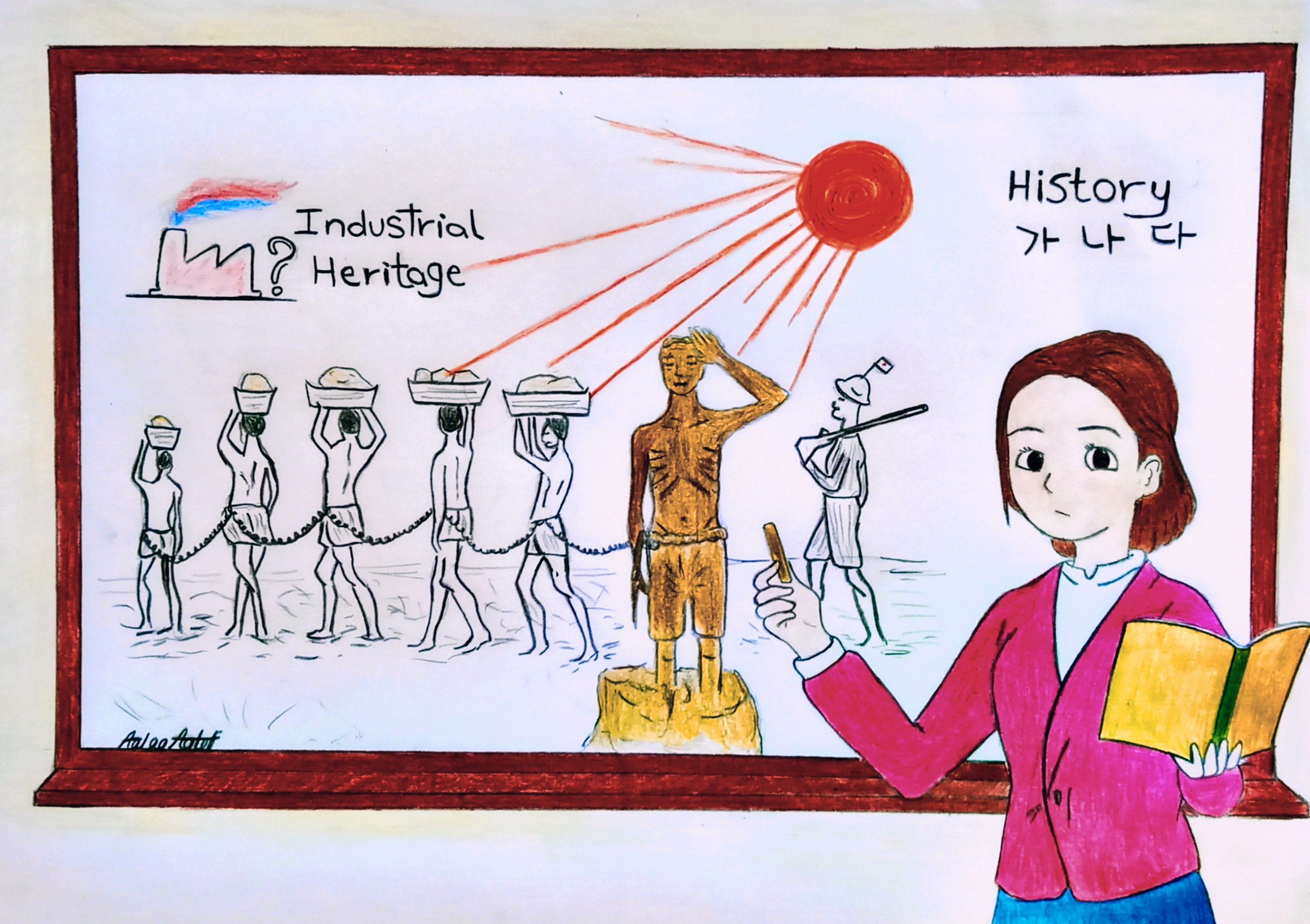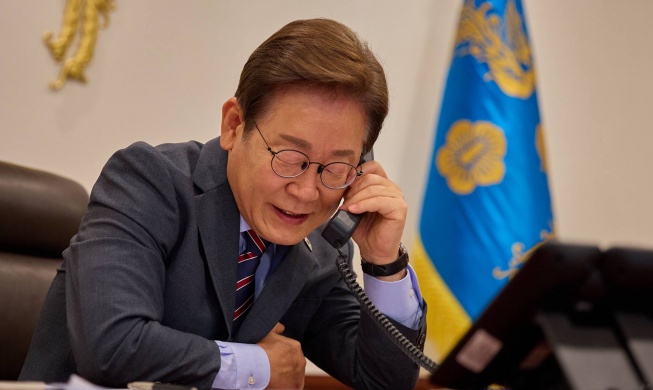- 한국어
- English
- 日本語
- 中文
- العربية
- Español
- Français
- Deutsch
- Pусский
- Tiếng Việt
- Indonesian
By Honorary Reporters Rizky Nindia Aszahra from Indonesia, Aalaa Aatef Ebada from Egypt and Hindu Abdullahi from Nigeria
Illustration= Aalaa Aatef Ebada

During World War II, Japan seized and exploited Korea's laborers and land. Schools, colleges and public places in Korea were forced to adopt the Japanese language and had to ban the use of Korean. Hundreds of thousands Korean women were abducted to become sex slaves for Japanese soldiers, and nearly 800 Korean men were forced to work on Hashima (Battleship) Island at a dangerous coal mine.
Located off the coast of Nagasaki, the island is a symbol of Japan's rapid industrialization. It is also known called Battleship Island because of its shape, the surrounding sea walls and abandoned buildings. The island is one of the 23 sites included in 2015 on the World Cultural Heritage list under the title "Sites of Japan's Meiji Industrial Revolution: Iron and Steel, Shipbuilding and Coal Mining."
The island receiving World Heritage status and the Japanese government's denial that any discrimination against Korean forced laborers occurred have hurt Korea and completely distorts facts. An accurate rendition of history said the Korean victims were forced to work without being properly fed and paid. Tokyo has thus broken its promise to present the true history of Japan's mobilization of Koreans for forced labor.
We three Honorary Reporters seek to spread the truth about Japan's history distortion to the world.
One illustration depicts a teacher discussing Japanese industrial heritage in a classroom. Forced Korean laborers are seen walking under the sunrise without clothes or shoes and with thin bodies lifting a container filled with coal, while soldiers holding rifles are ready to hurt anyone who disobeys them. The sun's reflection represents the blood of the forced laborers and the sunrise signifies the rising sun flag of Japan.
The color of smoke coming out of the Japanese factory's chimneys looks like the color of the Korean flag, because Japan's industrial heritage was possible through the blood, sweat and tears of the Korean victims. A brown statue with a rising hand tries to block the rising sun's rays, which represent Japan's attempt to distort the dark history of Hashima Island. Then the statue represents a Korean trying to deny facts about the Japanese government by attempting to insert the wrong perception of history into future generations.
History is history despite any attempts to distort it. Japan must realize that history distortion will only continue to ruin its national image in the eyes of the world.
chaey0726@korea.kr
*This article is written by a Korea.net Honorary Reporter. Our group of Honorary Reporters are from all around the world, and they share with Korea.net their love and passion for all things Korean.
Most popular
- Military discharge sets stage for reunion of all 7 BTS members
- BTS to mark 12th anniversary of debut with 2-week festival
- Lee Jae-myung officially sworn in as nation's 21st president
- Presidents Lee, Trump discuss tariff deal in first phone talks
- President's 1st executive order is launch of economic task force
